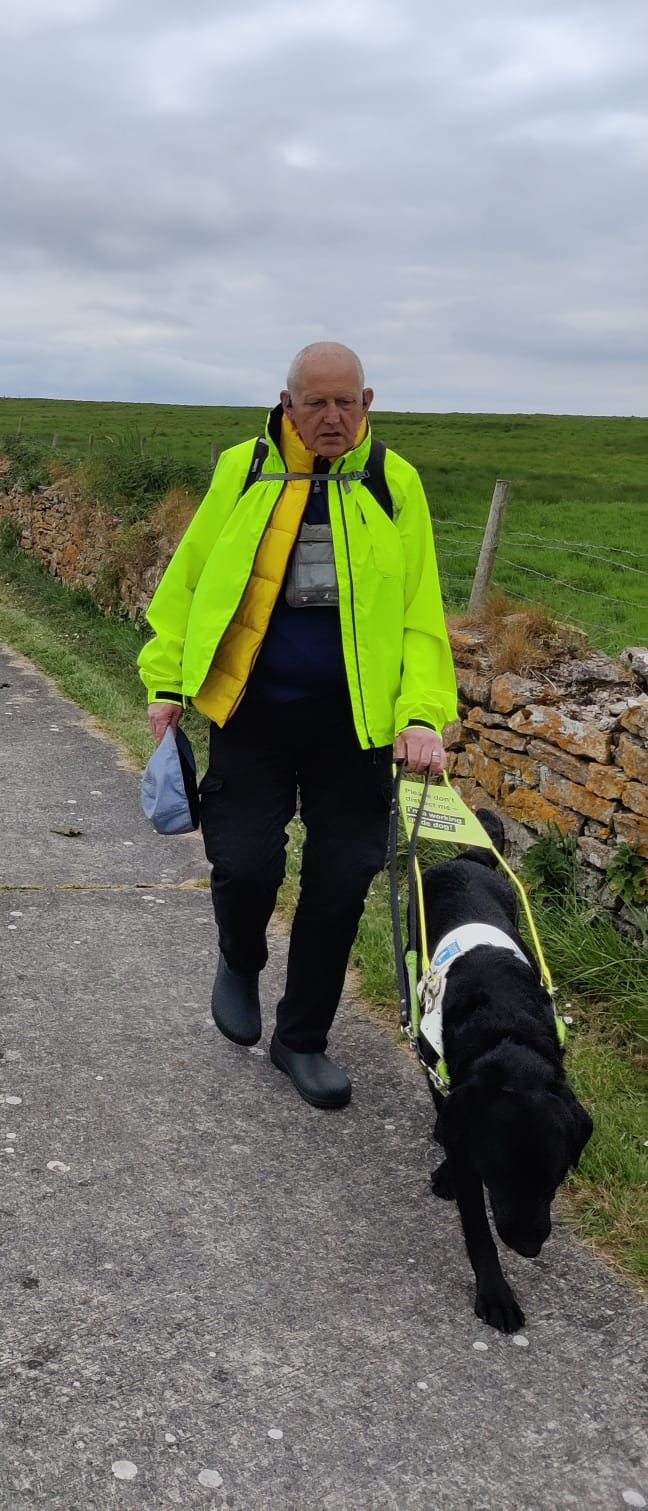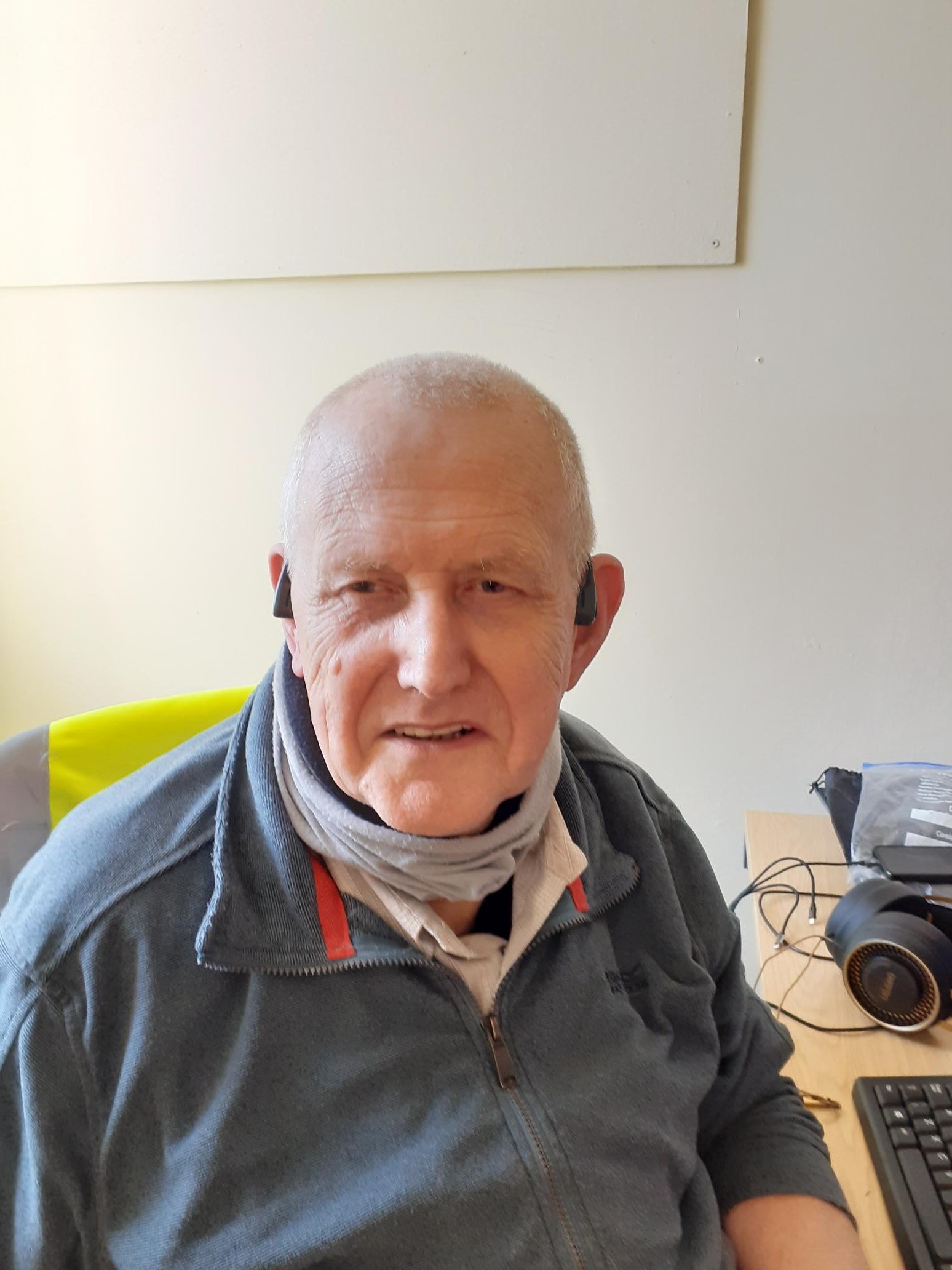Tech Through Time
In advance of Disability History month, our Chair of Trustees David Quarmby looks back through his years of Tech Through Time.

Perhaps you would not expect this but I was a late developer when it comes to using technology. When I was at University, other than a portable typewriter which had a braille scale on to assist me putting in the paper correctly, a reel to reel tape recorder and a talking book machine made out of solid wood and the size of a small suitcase, I was reliant on face to face contact from volunteer students to read course material to me.
How things have changed over the years and how easy it would be these days for me to study and do the work.
When I finally qualified as a social worker in 1977, Access To Work provided me with a Dictaphone to record my interviews and help me do my work.
My first real experience of technology came in 1985, although one could argue I was already using it, was when I was asked to attend a national meeting in London regarding disability rights. There I was, sat around a conference table with lots of other people who were writing their own notes and had information on machines that they could use and access, whilst all I had was my trusted Dictaphone which was not of much use in this situation.
My appetite was wettened and I thought I must have some of this for myself. It could make my life much easier being much more in control in the gathering and use of information, both at work and at home.
Over the next few years, I made a number of successful applications to Access To Work, who provided me with equipment that was suitable for me to use in the work environment. My journey with technology had started and I have never looked back ever since and look forward to what delights could be around the corner, both for me and other people with sight loss.
Initially, I was reliant on seeking advice and unfortunately, my first experience was not very good. I had been provided with a piece of equipment known as a Braille Writer, which recorded the information you inputted onto tapes that were similar to that you found in Dictaphones. The tapes were forever getting stuck in the machine, causing limitless frustration and sometimes loss of work. Eventually I plucked up enough courage to argue for a Versa braille machine which was a lot more expensive but recorded the data I typed onto memory that was stored on a disk and could be displayed back to me on an integrated braille display. This was revolutionary for me; however, my speed for reading braille was relatively slow compared to others, as my eye sight loss had started much later in life and I could never pick up enough speed for it being my sole access to information.
Things radically improved when I got access to a Brail Lite Millenium.
This piece of kit, not only inputted in braille but the output could be accessed either via a small braille display or via voice from a speaker within the machine.
This was my go-to piece of equipment for many years. It allowed me to chair and manage meetings using the braille display but for longer pieces of texts, I could swiftly read through them using speech, either from the internal speaker or via an earpiece. It became my daily diary, my address book and my main source of accessing a variety of different formats and I would still be using it today if it had still been working or I could get another one.
However, European Regulations during the first decade of the 21st century prevented the import of further machines and once it had finally become unrepairable and I could not locate a purchasable replacement, my crush on this piece of technology had to end and we had to part and go different ways.
My first experience with computers came in the early 90’s when I received my first laptop for work. It was a Toshiba laptop with a 20 megabyte hard disk and 1 megabytes of ram. I still think I may have still got this laptop stored in a plastic box in my garage. I do tend to be a hoarder of old technology which could be the start of an assistive technology museum, if it ever came about.
I also was a pioneer with the RNIB when they introduced the first fully accessible newspaper service to receive The Guardian newspaper overnight via Teletext. That was the first newspaper I ever accessed at the grand old age of 55 years old; just think how easy it is these days to access both newspapers and books.
Early in the first decade of this century, I was fortunate in having the opportunity of being seconded from my Probation work place to the Home Office, to a position in the newly formed National Offender Management Service as “Assistive Technology Coordinator”. This brought me in contact with a lot of different forms of assistive technology that was required to support a wide range of disabled employees to carry out their daily work within the Probation Service. This provided me with an office base in London, allowed me to work part time from home and gave me the opportunity of travelling all over the country, in the provision of this support.
It also gave me some flexibility in my working hours due to the lengthy hours I worked which became vital at the emergence of Kirklees Visual Impairment Network (KVIN), when this was formed in October 2008.
Perhaps that’s a different story but the main thing from it was that the first service that KVIN provided was a weekly IT Drop-In Centre, providing peer support training in the use of magnification and screen reader usage in order that visually impaired people could learn to access and use computers.
At that time computers may have cost two to three hundred pounds; magnification software might have cost three or four hundred pounds and screen reader software cost an additional eight hundred pounds. This additional cost debard many visually impaired people unless they were in employment and could access Access To Work.
The other thing I tend to quote about this era is that the first accessible internet radio for visually impaired people to purchase was £350, if one did not qualify for the loan of one from British Wireless For The Blind. This is because the radio was designed specifically for the use of the blind. The market is much smaller and developers have to recoup their development costs.
If the smart speaker had been designed for the blind, this would no doubt have cost something similar but it wasn’t, it was designed for all, yet visually impaired people benefit from them immensely as they are voice input and audio output: not only can you access internet radio stations from all over the world but look at all the other things you can do with them, all by the control of your voice. Not only that, you can purchase them currently for under twenty pounds in the Amazon Prime Day sale.
This leads me on to talk about the major concept of “inclusive design” and for people that know me well, they know that it under-pins a lot of what I do and what I am about.
Pardon me for giving you my definition, I think it is so important that it must be stated and I used to quote it at one stage all the time in the signature of my messages, as I feel everyone should know about it – “Inclusive design means that all products, services and environments should be fully accessible and usable to the greatest extent to the majority of people, without the need for any adaptation or specialist design.”
I know, it is a difficult mouthful to swallow and understand and it takes several times of reading. I could spend a lot of time discussing its importance but again, that could be another story. I just want you to understand the principal of designing things for all from inception, so that everyone can access it at the same time and pay the same price.
This leads on nicely to the initial major technological development that has influenced my life and occurred shortly after KVIN was conceived.
Yes, I think most of you will have guess it by now, a piece of brilliant technology that was inclusively designed from inception. Magnification, screen reader, hearing and other accessibility features were inbuilt into its firmware and, although it was quite an expensive piece of kit, everyone paid the same price for it and could start using it without any additional cost. This was the iPhone smart phone and many of the same accessibility features are also included in similar smart phones using the Android operating system. Not only that, most smart phones and tablets have similar access features in them today.
Thirteen years on and now look what the smart phones can do; they are not just phones but mini computers in our pockets that have similar processing power to some computers.
Making a phone call and reading a text is only a small proportion of what they can do. I now can access millions of books, scan and read text, identify objects, navigate around independently, find out what’s around me, and use loads of accessible apps that can carry out a wide variety of functions.
Watching catch-up TV and streaming is now a breeze, with some also audio described.
What I really dream of is a pair of affordable sun glasses with camera’s and speakers that can work with the apps on my phone, so I can identify and do things independently without having to use my smart phone in my hand whilst out and about. I keep promising myself these are just around the corner and like others, I can’t wait for that day.
Finally, I just want to stress that I believe in cost effective technology which normally simply means products that have been inclusively designed.
If they have been specially designed or have to be adapted, the costs involved tends to lead to the situation that the majority of those that can benefit from them, cannot afford them and our biggest problem if this design is not from inception, products do not get adapted and we are excluded from their use. To avoid this, visually impaired people need to be involved in the design process from inception, as do others, to ensure that their access requirements are met.
Best regards
David Quarmby